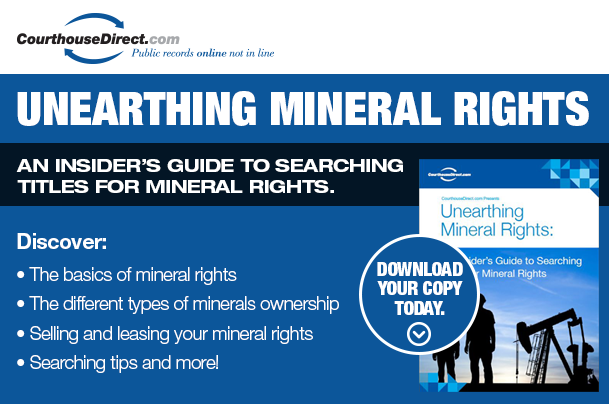
Mineral rights can be splintered into ever-smaller percentages, complicating life for lessors, lessees, and royalty owners. To make things more interesting, the laws of co-tenancy differ between states, and there have been several highly influential court cases over the past century that sought to clarify relationships and rights for all sides.
In oil and gas country, co-tenancy can create a legal quagmire for lands with complex hereditary history when it comes to mineral rights. After decades, it can be challenging to determine who has the rights to how much of the oil and gas. In other cases, the presence of more than one E&P company can complicate things.
Here is an overview of co-tenancy and what it means for oil and gas country.
What Is Co-tenancy?
Co-tenancy is a legal term describing a type of joint ownership of a single property by two or more entities. In the case of oil and gas, when the mineral rights under a parcel of land have been severed from the surface rights, you can find co-tenancy by multiple entities, either individuals or companies.
Co-tenancy law regards the lessees of mineral rights to be co-tenants as well, along with the mineral rights lessor or owner. It becomes even more complicated when co-tenancy is used to determine who receives royalties, who pays for operations and production, who may drill a well, and where they are allowed to drill it.
Since mineral rights can be split into such tiny pieces, the number of mineral rights owners can grow, although the percentages of royalties they receive depend on the rules of the lease.
With the law on co-tenancy differing from state to state, it depends on the location of the well how things are divvied up. In Texas, a very pro-business state, the law strongly leans toward exploitation and extraction of the natural resources. Therefore, a co-tenant generally has the right to extract minerals from jointly held property without obtaining the consent of all the co-tenants.
The same does not necessarily hold in other states, although some, like West Virginia, have recently enacted a law to make it easier for one co-tenant to act without the consent of all co-tenants.
Examples of the Impact of Co-Tenancy in Oil and Gas
We have already alluded to one of the biggest problems in co-tenancy - determining where the money goes and who has a right to do what on a piece of property. Do you need all co-tenants to agree before pursuing any action such as drilling a well or even setting foot on the surface property? Can a single co-tenant stop or start exploration or drilling without the consent of the others?
Another example is the impact on the landman, who performs title and lease searches. Think, for instance, about a property owner who died 50 years ago who severed the surface and mineral estates, then kept only half of the mineral interest. Over the course of 50 years, ownership of that portion of the interests could easily fragment or jump from one owner to another. In the meantime, the other half of the rights could be held by one or more parties with different agendas.
Co-Tenancy Law Outside of Texas
Just recently, West Virginia passed a law called the Co-Tenancy Modernization Protection Act. The new law stipulates that a company is permitted to drill on land where at least 75% of the mineral owners agree. By 75%, the law means the percentage of total ownership. So, if one party owns or has leased 75% of the mineral rights, that party can do whatever it wants with the property.
This law received significant support from the oil and gas industry in West Virginia because it makes dealing with multiple mineral rights owners more efficient. Before the law, operators were required to get consent from 100% of the oil and gas owners before they could develop the oil and gas estate. If an owner refused to sign the lease, the deal was dead in the water.
In Oklahoma, the case of Earp v. Mid-Continent Petroleum Corp. (1933) https://www.oilandgaslawyerblog.com/royalty-owners-and-cotenancy-devon-energy-production-co-v-apache-corporation/ took up whether a non-participating co-tenant can owe royalties to its lessors if it does not receive payments from the drilling co-tenant, even though the royalty owner’s lease is not maintained by production and has been terminated in its primary term.
According to the outcome of the case, when the lease terminates, the royalty owners become co-tenants with the drilling lessee and are entitled to their share of the net profits.
Texas Co-Tenancy Legal Issues
Texas has its share of co-tenancy cases. The case of Devon Energy Production Co. v. Apache Corporation from the Eleventh Court of Appeals took on an issue similar to that in Earp v. Mid-Continent Petroleum. https://www.oilandgaslawyerblog.com/royalty-owners-and-cotenancy-devon-energy-production-co-v-apache-corporation/
- Norma Jean Hester leased her one-third mineral interest to Apache Corporation and reserved a one-fourth royalty.
- The other mineral owners leased their rights to Devon Energy Production Co., reserving a one-fourth royalty.
- Apache and Devon could not agree on joint development activities on the property, yet Apache drilled without Devon’s participation.
- Texas law stated Apache and Devon were co-tenants, and Apache was obligated to account to Devon for two-thirds of the net profits from the wells.
- Apache did account for the net profits but refused to pay Devon's royalty owners.
In the case, Apache stated it had no obligation to pay the royalties because it did not lease minerals from those other owners. It only leased mineral rights from Norma Jean Hester; therefore, hers were the only royalties they were obligated to pay.
As stated before, Texas very much favors exploitation of natural resources, preferably before your neighbor does it. Read here for the rationale https://www.oilandgaslawyerblog.com/royalty-owners-and-cotenancy-devon-energy-production-co-v-apache-corporation/. Sometimes, that means an oil company may be drilling on a piece of land where an owner didn't sign an oil and gas lease. Does this open the doors for an ownership claim or trespassing case?
Not according to the outcome of Radcliffe v. Tidal Petroleum, Inc., which looked into claims of partial ownership and non-possessory royalty rights stemming from the estate of Emma Radcliffe. In 1945, Radcliffe conveyed the entire surface estate and at least 50% of the mineral estate to certain individuals. By 2010, ownership of the surface and half the mineral rights came to the Basham family who leased the lands to Tidal Petroleum.
Tidal developed productive, paying wells. In 2011, Emma Radcliffe’s heirs descended upon Tidal claiming to be holders of the 50% reserved interest and Tidal was drilling without their permission. The court ruled in Tidal’s favor when the company asserted both co-tenancy and a gap in the chain of title.
See how bewildering it can become? In the last case, a thorough title search turned up a gap that saved a company’s bacon, but that was in Texas. In another state, the case could have gone another way. When entering into co-tenancy and dealing with various royalty interests and owners, it pays to be careful and thorough.























